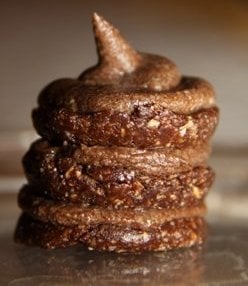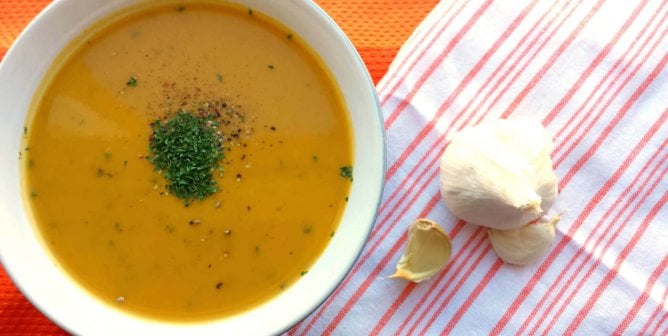The following is an interview with Carissa Leventis-Cox of Mama in the Kitchen, and she ain’t cookin’!
My family loves raw vegan foods, but we don’t like to eat too many nuts. Most raw cakes are made mainly from almonds or cashews or walnuts, but this one is made from sprouted oat flour. (You will need to prepare the flour in a dehydrator a day before you make the cake. See note below.) The icing is made of avocado and coconut oil, which are loaded with beneficial nutrients.
This recipe is versatile: The cake batter is dense and can be turned into raw brownies or cookies, and the icing can be used as a topping for practically anything. We love it—hope you do too!
Raw Chocolate Cake

Cake Batter:
1/4 tsp. sea salt
1/2 cup raw cacao or raw carob powder
1 1/2 cups pitted dates
2 cups sprouted oat groats flour (see note below)
6 Tbsp. maple or agave syrup, or to taste
- Put the salt, cacao or carob powder, dates, and oat flour in a food processor and process the ingredients.
- Slowly add in the syrup until you have a batter that sticks together.
- Pat batter firmly into baking molds that are greased with coconut or olive oil to create mini-cupcakes or layers of cake. Set these aside while you make the icing.
Chocolate Icing:
1/4 cup raw cacao or carob powder
1/2 cup extra virgin coconut oil, at room temperature
1/2 cup maple or agave syrup
Flesh of 1 medium avocado
- In a food processor, mix together all the ingredients until smooth and creamy.
- Spread on top of cupcakes or in between layers of cake.
Makes approximately 12 mini-cupcakes or 1 layer cake
Note: Be sure to prepare the oat flour one full day before you make the cake.
Oat Flour
- Soak 2 cups of oat groats overnight. Drain and rinse.
- Place the oats on two mesh screens on trays in a dehydrator until the oats are thoroughly dry. I place the dehydrator on full for an hour and then decrease the temperature to 105ºF. This takes about half a day.
- Process 2 cups of the dehydrated oats in a blender set on high speed until the oats turn into a fine flour.
- Easy alternative: In a blender, grind rolled oat flakes into flour. However, keep in mind that this will yield flour that isn’t raw.
Text VEG to 73822 to get the latest vegan lifestyle tips, recipes, and urgent action alerts texted right to your phone.
Terms for automated texts/calls from PETA: https://peta.vg/txt. Text STOP to end, HELP for more info. Msg/data rates may apply. U.S. only.







